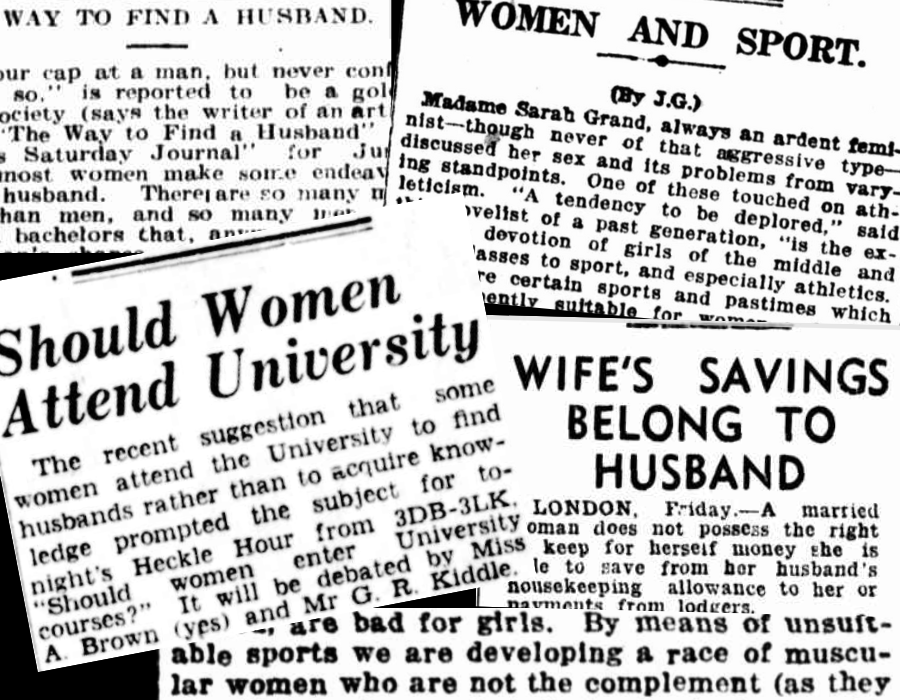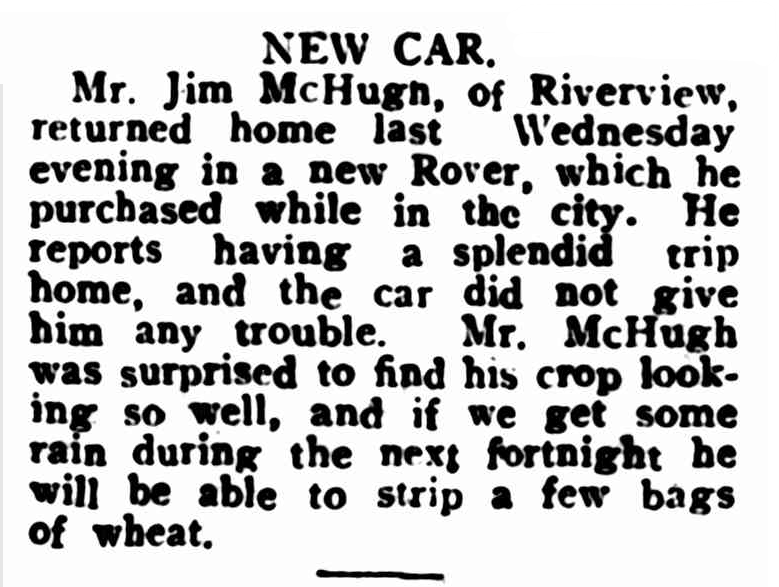Cheney
Brew
National Library of Australia
Trove’s historical newspapers contain reports of events as they were happening. Letters home from the front lines of war, sensational court cases, descriptions of new fashions from London and Paris, and details of a country wedding. You can find all of this and more, including the sense that news reporting has changed a lot over the last few hundred years.
Beyond normal ways language and style develop over time, you may come across writing that is biased or prejudiced, reveals very personal details, or covers stories that seem odd or trivial to modern readers. Trove has disclaimers and cultural sensitivity warnings to let people know what they might discover when they start researching – but what sort of things in Trove’s newspapers need a bit of context to better understand them?

Most people have long accepted that women should, if they want to, attend university or participate in sports without worrying about their marriage prospects. But this wasn’t always the case. Historical newspapers regularly printed articles debating what women should and shouldn’t be allowed to do. It’s just one example of how hot topics at the time – no doubt discussed at dinner tables and parties all around Australia – are reflected in media.
Reading articles where unequal treatment of people is so casually discussed can be a shock. And these kinds of discussion weren’t just about women – you don’t have to search long to find articles we would now consider racist, classist, ageist, ableist or anti-migration.
From around 1860, it became possible for married couples in Australia to divorce. But until 1975 (over 100 years later!) divorce required proof that one partner was at fault. Details of ‘matrimonial offences’ commonly made their way into news reports. This is why you’ll see newspaper reports on divorce cases using words like ‘desertion’, ‘cruelty’ or even ‘insanity’ – these were once included in the list of legal grounds for divorce.

Divorce case details were often so shocking to the reading public (many were not pleased that divorce was legal at all) that there was debate over how they should be covered. This conversation appeared in the papers too, with opinions on both sides as to what was too personal to print and what journalists thought readers had a right to know. Gradually, changing privacy laws and the fact that divorce became more common and accepted meant divorce cases between non-famous people were much less likely to be reported at all.

All sorts of personal information was printed in historical newspapers – not just scandalous court cases. Getting engaged or going on holiday was often enough to get you in the paper in mid-19th-century Australia. You’d probably have to be a celebrity to be written about in big, metropolitan titles (without committing a crime), but a local farmer buying a car was a great story for the Mudgee Guardian and North-Western Representative in 1925.

This would seem strange to today’s news audience but consider that cars were uncommon, especially in smaller towns, and (of course) there was no internet to make a post on social about your new buy. Local newspapers fulfilled a similar purpose to social media today – a way for people to get quickly updated with local goings-on.

The idea of being able to share personal thoughts with a wide, connected audience is a new concept for most ordinary people. Unless you were a favoured novelist, scientist or even a socialite in the 19th and early 20th century – then newspapers would let you write about pretty much anything you wanted.
You’ll see rambling accounts of a writer’s travels (like this 1880 Rome travel diary introducing the public to new, exciting dishes like ‘spaghetti’ and ‘risotto’) or long musings on sport, politics and more. Being a newspaper columnist at this time was open only to a narrow section of society, so opinions expressed, while interesting and sometimes informative, should not always be taken as objective fact. Columns were regularly accepted from people writing anonymously, or under pseudonyms, so they didn't have to be held accountable for what was written.

That journalists should be objective where possible and verify sources before publishing is also a relatively new standard. In 1896, one reporter clearly had no problems passing their own judgement on defendants and even speculating on a proper punishment! We know researchers find detailed and colourful reports like these interesting to read alongside the actual historical legal files to understand how the crime was judged by society, the impact it made and the morals and values of the Australian public at the time.
For many people, what they find in Trove are valuable details that would be hard to discover in other ways. Sometimes, once discovered, people may wish some stories had stayed hidden. It can be difficult to weigh a wish for privacy, or that certain events stay in the past, against people's desire to learn about their own history or the past in general. It’s important that material, like newspapers, that were written for the public, should continue to remain accessible to the public – so everyone has an opportunity to read, learn and discuss.
As you can see, searching in Trove is not always about fact finding. Reading a historical newspaper – at times amusing, fascinating, biased, embarrassing, quirky or confronting – is glimpsing the past. We can learn about how certain parts of Australia thought, what was important to them, how society changes – either quickly or slowly – and be reminded how far we’ve come or have left to go.